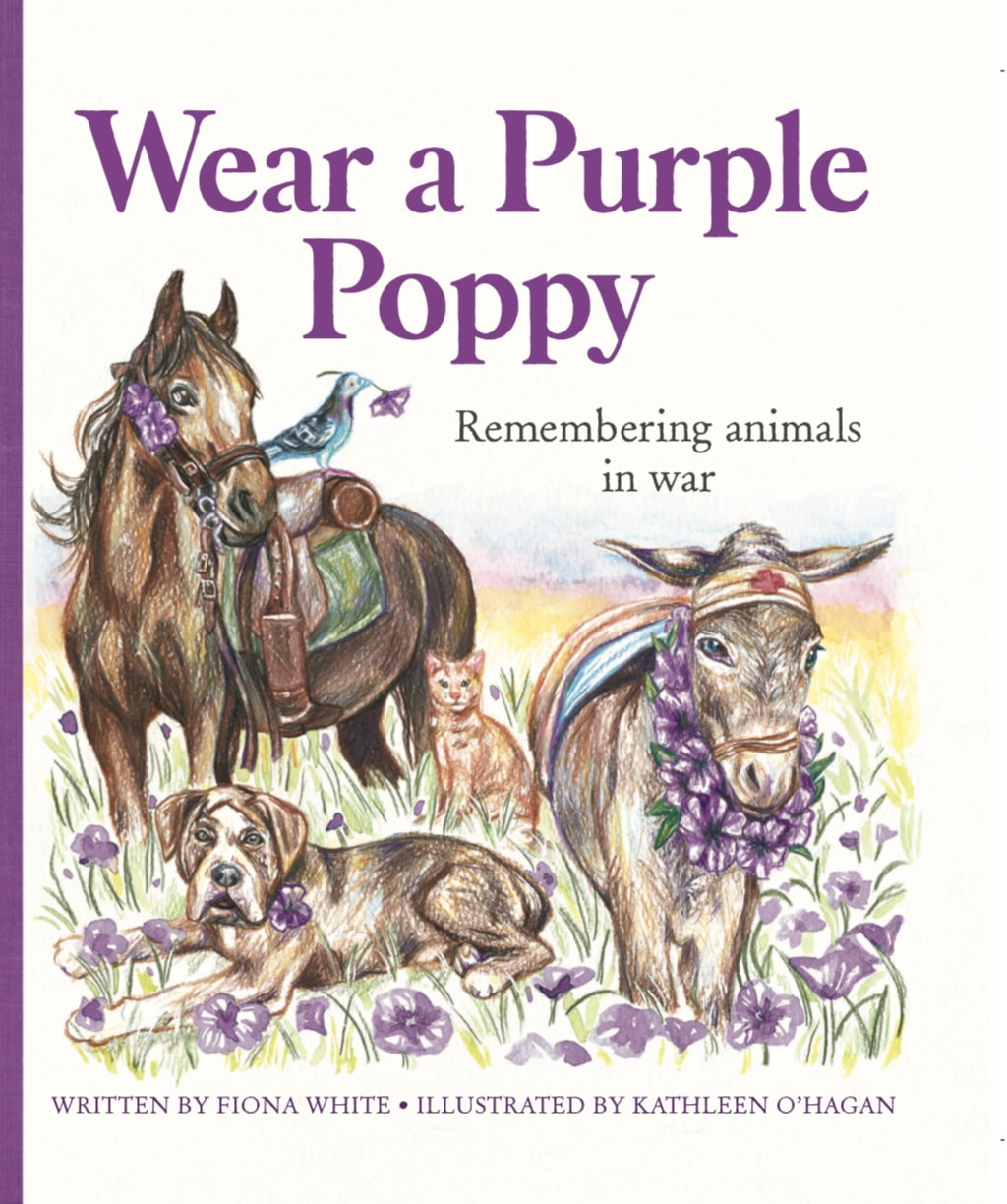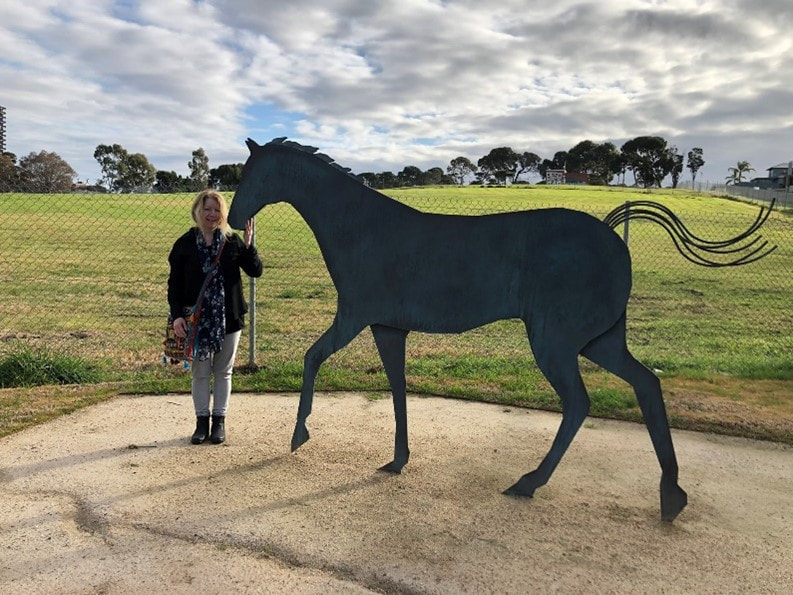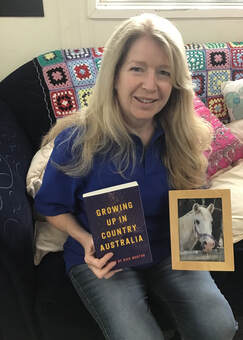Wear a Purple Poppy

The tribute to Sandy, the only horse to come home, Maribyrnong VIC.
Me with a copy of Growing Up in Country Australia
and a photo of Nimbus. |
My non-fiction picture book, Wear a Purple Poppy, began as a poem.
Back in 2019, my partner and I headed to the Shrine of Remembrance in Melbourne. It had been years since I’d been there, and I was keen to see their new exhibits. After spending several hours studying the displays, I wandered into the gift shop and discovered the existence and purpose of the purple poppy. The feeling of seeing those poppies for the first time is still clear in my mind. Years before, I’d been shocked to discover that 136,000 horses were shipped out of Australia during World War I, and only one (Sandy) ever came home. I’d read and cried through books about individual animals, such as Daisy in Morris Gleitzman’s Loyal Creatures, Digger in Mark Wilson’s book of the same name, and many others. Working in a school, I often had students asking me about the purple poppy when I wore it alongside the red one on remembrance days throughout the year. In a poem there are a lot of things that don’t get said. Or maybe they get spoken silently. A purple poppy seems such a tiny thing to wear when all those animals had to go to wars they didn’t sign up for. Poppies might be small, but their symbolism is enormous. They show that we’ve been brave enough to remember. They show that we understand that many, many soldiers were heartbroken to have to leave those animals behind. If we don’t let ourselves remember we don’t give pause to hold those beautiful, brave creatures in our thoughts. Organisations such as the Australian War Animal Memorial Organisation (AWAMO) raise funds for memorials, as well as training for support animals and funding for care packages. In line with the poem, I also included non-fiction information about how the animals served in the war. There were a lot of tears during the research and telling of the stories, but the more I read, the stronger the urge to share the purple poppy grew. It became important to me to lean into the facts so we could honour the animals, as well as the soldiers. In 2021, I was delighted when Kate Stevens from Hachette made an offer of publication and we teamed up with the wonderful illustrator, Kathleen O’Hagan. The purple poppy is worn alongside the red poppy; remembering the brave sacrifices of our soldiers and the animals who served with them. I believe the existence of the purple poppy shows our growth in honouring the struggles and challenges that animals also faced in war. For many years after the World War I, the shock, devastation, and enormous loss of life meant that the fate of the animals was not at the forefront of people’s thoughts. Over the decades, though, this changed as memorials were built and stories were told. Wear a Purple Poppy is published by Hachette Australia and illustrated by Kathleen O'Hagan. |
Growing Up in Country Australia
|
With Rick Morton, editor of Growing Up in Country Australia.
|
Growing Up in Country Australia is an anthology of short stories published by https://www.blackincbooks.com.au/ and edited by https://www.rickmorton.com.au.
The book is a fresh, modern look at country Australia. There are stories of joy, adventure, nostalgia, connection to nature and freedom, but also more grim tales – of drought, fires, mouse plagues and isolation. From the politics of the country school bus to the class divides between locals, from shooting foxes with Dad to giving up meat as an adult, from working on the family farm to selling up and moving to the city, the picture painted is diverse and unexpected. This is country Australia as you’ve never seen it before. Including nearly forty stories by established and emerging authors from a wide range of backgrounds – including First Nations and new migrants – Growing Up in Country Australia is a unique and revealing snapshot of rural life. I'm very proud to have my story about Nimbus included in this book. |



